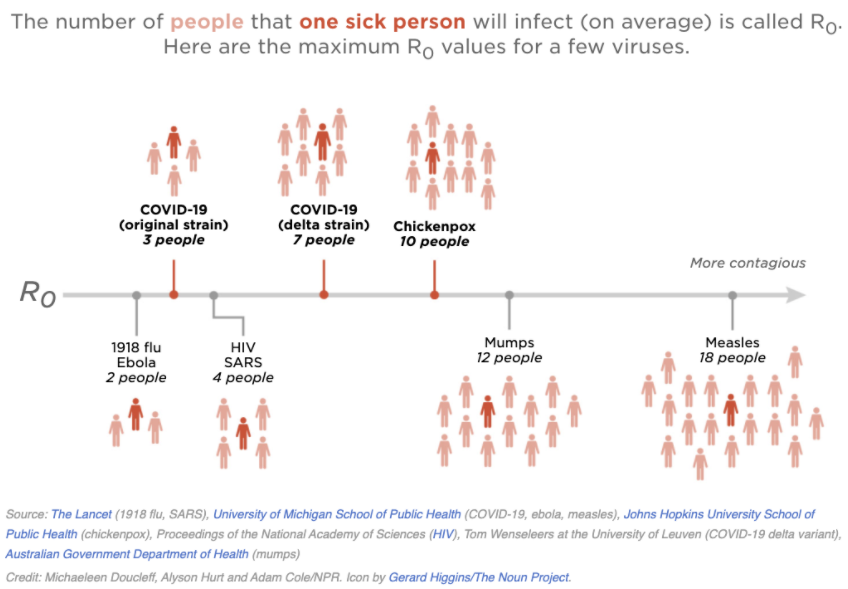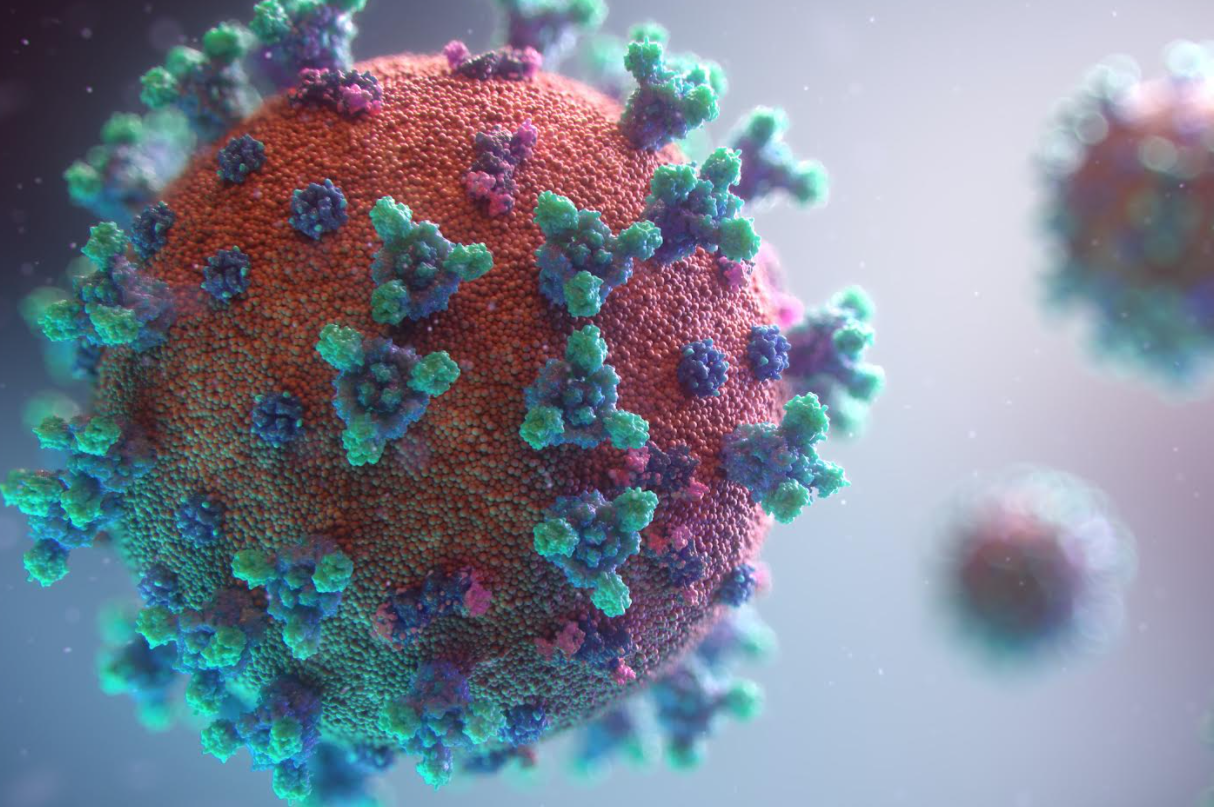How COVID-19 Variants are Affecting the Course of the Pandemic
August 31, 2021
Over the last several months, it seems like we’ve been on a COVID-19 Rollercoaster. First, the long-awaited vaccines rolled out and a subsequent decline in cases was reported in regions where vaccines were rolled out quickly. In May, 64% of Americans polled by ABC News/Ipsos expressed optimism for the next 12 months. Just two months later, that optimism was now only shared by 45% of people surveyed. The pollsters pointed to the sudden uptick in COVID-19 cases and the growing threat of the Delta Variant to the return to normalcy.
Confusion was compounded by a growing social unrest to ease restrictions and eliminate mask mandates for the summer. Many countries gave into this social pressure at just the wrong time.
In this first blog, I’d like to provide a very simple overview of variants, what they are, which ones are currently circulating and what this could mean for our fight to end the COVID-19 Pandemic.
What are Variants?
All viruses evolve, mutate, and change in size and shape over time. The higher the transmission rate, the more a virus replicates, and the greater the chances that the construction of the genome obtains an error, which defines a mutation. Mutations of a virus can potentially aid the virus in avoiding our immune systems defenses (and vaccine immunity). When a virus mutates, the changes may be small and insignificant, but in some cases the mutations can be more significant and may affect the virus’ ability to infect us and cause more severe symptoms. Significant mutations can be identified when a virus undergoes a change in size, shape, and functionality, thus affecting its binding affinity to our cells.
Virus mutations may either be helpful or harmful to the virus’s ability to spread and infect more hosts. Through a process of natural selection, the most robust version of the virus emerges where variants that weaken the virus die off.
As of the writing of this blog, GISAID (Global Initiative on Sharing Avian Influenza Data) has sequenced more than 2.5 million variants of COVID-19. The vast majority of these sequenced variants have mutations that don’t negatively affect us, but there are about a dozen currently sequenced variants that we are keeping a close eye on.
Variants of Concern and Interest
The World Health Organization (WHO) defines a SARS- CoV-2 strain to be a “variant of concern” if it meets one of three criteria:
- Increased Transmissibility
- Negative Effects on Immunity
- Increased Infection Severity
Currently, the WHO lists the following variants as “variants of concern”:
- Alpha: First discovered in the United Kingdom in September of 2020, it was previously known as the Kent Variant.
- Beta: Discovered and sequenced in South Africa in September of 2020.
- Gamma: Identified in Brazil, the Gamma Variant was first sequenced in December 2020
- Delta: Responsible for the rapid increase in cases and death in India, it was first identified in December of 2020.
Currently designated Variants of Concern:

*Notable spike (S) amino acid changes under monitoring, which are currently reported in a minority of sequenced samples.
Current variants of concern as defined by the World Health Organization (WHO)
Both the Alpha and Beta variants were responsible for rapid increases in infection cases, hospitalizations, and death largely before the first generation COVID-19 vaccines were made widely available.
The Gamma variant spread quickly through South America during the first several months of the year, spreading through Brazil and neighboring countries.
Following Alpha, Delta has quickly risen to become the dominant variant in the United States, Europe and many other regions of the world. Below, we’ll go into more detail about this variant which has now become the dominant variant across the world.
The WHO also identifies and monitors “variants of interest”. These are variants where the WHO is monitoring the mutations in the variant to see if they will lead to increases in transmissibility, negative effects on immunity or increased severity of disease.
One variant of interest that we are monitoring closely is the Lambda Variant first discovered in Peru. The population of Peru has suffered the highest mortality rate in the world at around 550 deaths per 100,000 people, twice as high as neighboring Brazil. Despite imposing one of the strictest and earliest lockdowns, the country has been especially hit hard in 2021. While many factors influence a country’s mortality rate, scientists are monitoring the Lambda Variant for the possibility that it causes greater severity of disease.
The Delta Variant
The Delta Variant is predominantly characterized by its increased transmissibility. It is estimated that a person infected with the wildtype Wuhan variant could spread the virus to up to 2.5-3 people, however, the Delta Variant is estimated to be more than twice as transmissible with the potential of infecting up to 7 people. Equally concerning is Delta’s ability to replicate much faster in the body leading to viral loads greater than 1000x the original Wuhan Variant. This means that Delta’s onset will be quicker and stronger as its ability to cause disease and severe symptoms is more effective.

The key mutations of the variant can be targeted to the Spike Protein, a coating of the linear genome of SARS–CoV-2, which gives it its signature crown-like appearance. The Spike protein is responsible for the binding between the viral molecule and the body’s cells. The mutations on the Spike affect the way the virus interacts with the ACE2 receptor protein – found especially on the surface of the lungs – which allow for the virus to evade antibodies and better bind to the cells.
Variants Impact on Vaccine Efforts
Data is emerging from highly vaccinated countries like Israel which show that first generation vaccines are now only about 36% effective in preventing infection. In the United Kingdom, reports have emerged that 40% of the hospitalized have been vaccinated. As COVID-19 continues to mutate and new dominant strains emerge, next generation vaccines will be needed to prevent infection and stop transmission. As many of the concerning mutations have occurred in the Spike Protein, vaccines will need to target other proteins which have less of a tendency to mutate.
What’s Next?
It’s becoming clear that additional booster shots will be needed to respond to current and future variants. Today, several countries (Israel, Chile, France, etc) are advancing efforts to provide an additional booster shot to the immunocompromised. Israel has already begun a campaign to administer additional booster shots, with more than 500,000 people having received the third shot. Some trials are being conducted on variant specific booster shots which should provide an additional level of protection, but the end of the pandemic awaits vaccines that can provide more than just short-term protection.
How COVID-19 Variants are Affecting the Course of the Pandemic
August 31, 2021
Over the last several months, it seems like we’ve been on a COVID-19 Rollercoaster. First, the long-awaited vaccines rolled out and a subsequent decline in cases was reported in regions where vaccines were rolled out quickly. In May, 64% of Americans polled by ABC News/Ipsos expressed optimism for the next 12 months. Just two months later, that optimism was now only shared by 45% of people surveyed. The pollsters pointed to the sudden uptick in COVID-19 cases and the growing threat of the Delta Variant to the return to normalcy.
Confusion was compounded by a growing social unrest to ease restrictions and eliminate mask mandates for the summer. Many countries gave into this social pressure at just the wrong time.
In this first blog, I’d like to provide a very simple overview of variants, what they are, which ones are currently circulating and what this could mean for our fight to end the COVID-19 Pandemic.
What are Variants?
All viruses evolve, mutate, and change in size and shape over time. The higher the transmission rate, the more a virus replicates, and the greater the chances that the construction of the genome obtains an error, which defines a mutation. Mutations of a virus can potentially aid the virus in avoiding our immune systems defenses (and vaccine immunity). When a virus mutates, the changes may be small and insignificant, but in some cases the mutations can be more significant and may affect the virus’ ability to infect us and cause more severe symptoms. Significant mutations can be identified when a virus undergoes a change in size, shape, and functionality, thus affecting its binding affinity to our cells.
Virus mutations may either be helpful or harmful to the virus’s ability to spread and infect more hosts. Through a process of natural selection, the most robust version of the virus emerges where variants that weaken the virus die off.
As of the writing of this blog, GISAID (Global Initiative on Sharing Avian Influenza Data) has sequenced more than 2.5 million variants of COVID-19. The vast majority of these sequenced variants have mutations that don’t negatively affect us, but there are about a dozen currently sequenced variants that we are keeping a close eye on.
Variants of Concern and Interest
The World Health Organization (WHO) defines a SARS- CoV-2 strain to be a “variant of concern” if it meets one of three criteria:
- Increased Transmissibility
- Negative Effects on Immunity
- Increased Infection Severity
Currently, the WHO lists the following variants as “variants of concern”:
- Alpha: First discovered in the United Kingdom in September of 2020, it was previously known as the Kent Variant.
- Beta: Discovered and sequenced in South Africa in September of 2020.
- Gamma: Identified in Brazil, the Gamma Variant was first sequenced in December 2020
- Delta: Responsible for the rapid increase in cases and death in India, it was first identified in December of 2020.
Currently designated Variants of Concern:

*Notable spike (S) amino acid changes under monitoring, which are currently reported in a minority of sequenced samples.
Current variants of concern as defined by the World Health Organization (WHO)
Both the Alpha and Beta variants were responsible for rapid increases in infection cases, hospitalizations, and death largely before the first generation COVID-19 vaccines were made widely available.
The Gamma variant spread quickly through South America during the first several months of the year, spreading through Brazil and neighboring countries.
Following Alpha, Delta has quickly risen to become the dominant variant in the United States, Europe and many other regions of the world. Below, we’ll go into more detail about this variant which has now become the dominant variant across the world.
The WHO also identifies and monitors “variants of interest”. These are variants where the WHO is monitoring the mutations in the variant to see if they will lead to increases in transmissibility, negative effects on immunity or increased severity of disease.
One variant of interest that we are monitoring closely is the Lambda Variant first discovered in Peru. The population of Peru has suffered the highest mortality rate in the world at around 550 deaths per 100,000 people, twice as high as neighboring Brazil. Despite imposing one of the strictest and earliest lockdowns, the country has been especially hit hard in 2021. While many factors influence a country’s mortality rate, scientists are monitoring the Lambda Variant for the possibility that it causes greater severity of disease.
The Delta Variant
The Delta Variant is predominantly characterized by its increased transmissibility. It is estimated that a person infected with the wildtype Wuhan variant could spread the virus to up to 2.5-3 people, however, the Delta Variant is estimated to be more than twice as transmissible with the potential of infecting up to 7 people. Equally concerning is Delta’s ability to replicate much faster in the body leading to viral loads greater than 1000x the original Wuhan Variant. This means that Delta’s onset will be quicker and stronger as its ability to cause disease and severe symptoms is more effective.

The key mutations of the variant can be targeted to the Spike Protein, a coating of the linear genome of SARS–CoV-2, which gives it its signature crown-like appearance. The Spike protein is responsible for the binding between the viral molecule and the body’s cells. The mutations on the Spike affect the way the virus interacts with the ACE2 receptor protein – found especially on the surface of the lungs – which allow for the virus to evade antibodies and better bind to the cells.
Variants Impact on Vaccine Efforts
Data is emerging from highly vaccinated countries like Israel which show that first generation vaccines are now only about 36% effective in preventing infection. In the United Kingdom, reports have emerged that 40% of the hospitalized have been vaccinated. As COVID-19 continues to mutate and new dominant strains emerge, next generation vaccines will be needed to prevent infection and stop transmission. As many of the concerning mutations have occurred in the Spike Protein, vaccines will need to target other proteins which have less of a tendency to mutate.
What’s Next?
It’s becoming clear that additional booster shots will be needed to respond to current and future variants. Today, several countries (Israel, Chile, France, etc) are advancing efforts to provide an additional booster shot to the immunocompromised. Israel has already begun a campaign to administer additional booster shots, with more than 500,000 people having received the third shot. Some trials are being conducted on variant specific booster shots which should provide an additional level of protection, but the end of the pandemic awaits vaccines that can provide more than just short-term protection.






